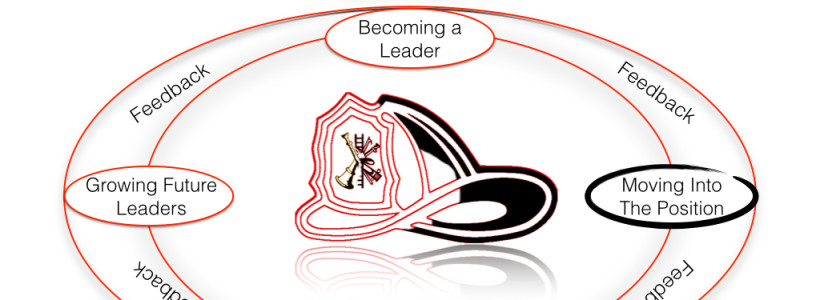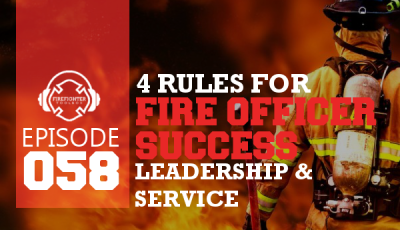Fire Service Leadership Continuum – Part 3
In part 2 we discussed the three pillars for building the knowledge, skills and abilities necessary to become a leader. Today we will look at four areas of importance when taking on a leadership role.
Once the aspiring leader has addressed these areas, the next step is actually moving into the leadership position. You have become the leader, and you must establish yourself as such. This is perhaps the most difficult point in the continuum.
Often, you will be asked to lead people who were your peers before you were promoted. The new leader must handle this transition with confidence and professionalism.
There are four areas you must address when moving into a new leadership position. By assuring that you have covered each one of these bases, you will set yourself and your team up for success.
#1 – Courage
Stepping into a leadership role, especially one where you are now leading former peers, can be a nerve-racking experience. Often, we rely on our courage to go into dangerous situations. After all, we run into burning buildings for a living.
When moving into a leadership position, you have to have the courage to actually lead. This means that you have to know when to stand up and have conviction, even if it is not the popular stance. Doing so will inspire courage among your teammates and assure them that you will stand up for the right thing.
#2 – Vision
Where do you see yourself, your team, and your department in the future?
Having a vision is what gives you something to aim for and a direction to take your team in. When moving into a leadership position, it is of paramount importance that you have a vision for the future.
This is not some magical thing that only certain people have. Simply look within and ask yourself what you have a passion for. I would wager that a majority of us would say that helping others is our passion, and is the reason we do this job.
Well, there you have it. Use this passion to establish your vision for the team and have the initiative to see the vision through.
#3 – Commitment
Leadership is nothing without commitment. Being committed to your cause shows those you lead that you have conviction and believe that the team will succeed. Having this kind of commitment will encourage others to remain committed to the organization and those we serve.
When I first became a company officer, I used my leadership philosophy to develop something I called “Robert’s Code of Conduct.” This code established what I expected of my crew and what they could expect of me. I provided a copy to each person on my team, and made clear that through this code, I was committed to them, the department, and our customers. Make sure your team knows you are committed to them and the fire service, then back it up with action.
#4 – Communication
Communication is the foundation upon which your ability to lead your team is built. Gil Amelio, a former Apple CEO, once stated, “Developing excellent communication skills is absolutely essential to effective leadership. The leader must be able to share knowledge and ideas to transmit a sense of urgency and enthusiasm to others. If a leader can’t get a message across clearly and motivate others to act on it, then having a message doesn’t even matter.”
This is, perhaps, the best description of what communication means to a leader. Remember, communication is a two-way street. Effective communication is not just sending a message, it is sending a message and receiving feedback on that message. Without effective communication, your team will never be able to understand your vision or expectations, nor will you be able to understand theirs.
Moving into the position is a challenging point in the continuum, but with courage, vision, commitment, and communication you can navigate these waters with ease.
Establish yourself as a leader your team can rely on and remember that the team is what makes or breaks the leader. Take care of your people and they will take care of you.
Photos courtesy of and copyrighted by Robert Simmons.
Find the complete series here!
Part 1: Introducing the Fire Service Leadership Continuum
Part 2: Becoming A Leader (The Pillars)
Part 3: Moving Into The Position
Part 4: Being The Leader
Part 5: Growing Future Leaders
Part 6: 360 Feedback (Putting It All Together)












Pingback: Fire Service Leadership Continuum – Part 1 | FireFighterToolBox
Pingback: Fire Service Leadership Continuum: The Pillars | FireFighterToolBox
Pingback: Fire Service Leadership Continuum – Being The Leader: Part 4 | FireFighterToolBox
Pingback: Fire Service Leadership Continuum – Part 5 | FireFighterToolBox
Where was I all along, such pertinent information? Thank you brothers and sisters for sharing your skills, knowledge, experiences and expertise.
I thank all of you and pray that God continues to guide and protect us as we serve those who provide us with the opportunity to work for them and on their behalf …